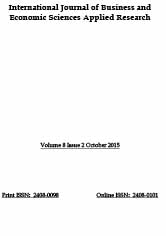Socioeconomic Determinants of the Changes in Homicides over Time: A VAR Analysis
Socioeconomic Determinants of the Changes in Homicides over Time: A VAR Analysis
Author(s): José Caraballo-CuetoSubject(s): Economy, Economic development
Published by: Τεχνολογικό Εκπαιδευτικό Ίδρυμα Ανατολικής Μακεδονίας και Θράκης
Keywords: homicides determinants; socioeconomic conditions; crime
Summary/Abstract: Purpose – We search for determinants of the change in homicides over time by analyzing the interconnection between a high incidence of murders and the socioeconomic environment, using Puerto Rico as the case study. This case presents intriguing facts that challenge some of the conventional crime hypotheses. For instance, in forty years homicides quadrupled by four times while the population was aging and declining. Design/methodology/approach – First, a new and simple theoretical formalization is exhibited. Then, we applied three vector autoregressions, showed the variance error decompositions, and revised its structural stability. Findings – We found that jobless growth is insufficient to decrease murders. Instead, lower employment, a growing number of families led by a single parent, and higher urbanization have partially caused the increases in homicides. We also found that the homicide incidence partially is a self-propelled phenomenon. Research limitations/implications – The punishment approach is not sufficient in explaining and reducing the high level of homicides. The economic inequality does not map directly onto the changes, though it may explain the level of murders. Originality/value – The homicide incidence is found to be embedded in the socioeconomic structure.
Journal: International Journal of Business and Economic Sciences Applied Research (IJBESAR)
- Issue Year: VIII/2015
- Issue No: 2
- Page Range: 119-132
- Page Count: 14
- Language: English

